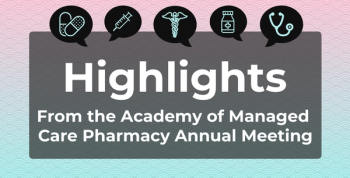
Reduction in Food Allergies Found After Guideline-Directed Early Peanut Exposure
Key Takeaways
- Early peanut exposure guidelines led to a 27.2% decrease in peanut allergies and a 37.9% decrease in one or more food allergies in children.
- The study used data from the American Academy of Pediatrics database, covering 31 academic and 17 independent practices.
Guidelines that encouraged the exposure of peanuts in children were found to significantly reduce food allergies.
Rates of diagnosis of peanut allergies and other food allergies mediated by immunoglobulin E (IgE) have decreased since guidelines were published that encouraged early exposure to peanuts in children, according to a new study conducted by researchers from the Children’s Hospital of Philadelphia (CHOP) and published in the journal Pediatrics.1
“In our study, we saw a nearly 40% reduction in peanut and food allergy diagnoses in children up to age 3 following the release of early peanut introduction guidelines. This provides real-world evidence that public health efforts promoting early allergen introduction in infancy are making an impact. From here, various stakeholders, including caregivers, pediatricians, and policymakers, can help support and amplify these practices,” Stanislaw Gabryszewski, MD, PhD, coauthor of the study, said in a statement to The American Journal of Managed Care®.
About 4% of children are affected by a food allergy that is mediated by IgE, which includes foods such as eggs, nuts, milk, wheat, and peanuts specifically. These allergies can cause immediate reactions that can threaten the life of the child, including difficulty breathing and swelling. The Learning Early About Peanut Allergy trial (
The American Academy of Pediatrics Comparative Effectiveness Research through Collaborative Electronic Reporting database was used for this study and contained electronic health records for primary care practices across the US. There were 31 academic health system practices and 17 independently owned practices included. Data were pulled from September 1, 2012, to January 31, 2020. All data were split into 2 groups that consisted of a preguidelines cohort whose entry to the cohort was from September 1, 2012, to October 31, 2014, and a postguidelines cohort whose entry was between September 1, 2015, and August 31, 2017. Those who entered the cohort between February 1, 2017, and January 31, 2019, were considered the postaddendum guidelines cohort. All participants were observed for at least 2 years.
Any child with a peanut allergy related to IgE along with 1 or more other food allergies related to IgE that both had and did not have atopic dermatitis were included in the study. Diagnosis codes were required for a child to be considered as having a food allergy.
The preguidelines, postguidelines, and postaddendum guidelines cohorts contained 38,594; 46,680; and 39,594 children, respectively. The mean age of those in the preguidelines group was 1.2 years, and the postguidelines group was 0.9 years in those that were included in the 2-year observation analysis. These mean ages were 1.0 year, 0.9 years, and 0.8 years in the 1-year observation analysis for the preguidelines, postguidelines, and postaddendum cohorts, respectively.
Peanut food allergy saw a 27.2% decrease in the 2-year observation analysis after the early introduction of the guidelines. The occurrence of 1 or more food allergies decreased by 37.9%, and the incidence of 2 or more food allergies decreased by 29.1%. The cumulative incidence of peanut allergies decreased by 43.0% in the 1-year observation analysis. This analysis also found a 28.6% decrease in 1 or more food allergies and a 28.6% decrease in 2 or more food allergies between the preguidelines and postaddendum cohorts.
The risk of diagnosis of a peanut allergy was reduced after guidelines were published (HR, 0.65; 95% CI, 0.55-0.77) and was further reduced in the postaddendum cohort (HR, 0.55; 95% CI, 0.46-0.66). This was also found in the risk of being diagnosed with any food allergy, which was reduced from preguidelines to postguidelines (HR, 0.69; 95% CI, 0.61-0.78) and further reduced from the postguidelines to the postaddendum cohort (HR, 0.63; 95% CI, 0.55-0.72). The diagnosis of atopic dermatitis increased during this time.
There were several limits to this study. Feeding patterns for toddlers and infants could not be obtained, so specific practices of food introduction could not be associated with the decrease in food allergy incidence. The study also did not include data from after the 2021 updated guidelines, which could have affected the incidence of allergies. Nondietary factors could have played a role in allergies. Further, food allergy testing and oral food challenges were not considered for diagnostic criteria, and generalizability to other health systems is not known.
“Our findings have relevance from those of us who treat patients to those caring for infants, and more awareness, education, and advocacy could further increase the positive results we observed in this study. Future studies could potentially explore specific feeding practices that help us better understand the timing, frequency, and dose of foods that optimize protection against food allergies,” said senior study author David Hill, MD, PhD, an attending physician with the Division of Allergy and Immunology at CHOP.2
References
1. Gabryszewski SJ, Dudley J, Faerber JA, et al. Guidelines for early food introduction and patterns of food allergy. Pediatrics. 2025;156(5):e2024070516.
2. Children’s Hospital of Philadelphia researchers observe significant reduction in diagnosis of food allergies following expert guidelines encouraging early peanut exposure. News release. Children’s Hospital of Philadelphia. October 20, 2025. Accessed October 20, 2025.
Newsletter
Stay ahead of policy, cost, and value—subscribe to AJMC for expert insights at the intersection of clinical care and health economics.







































